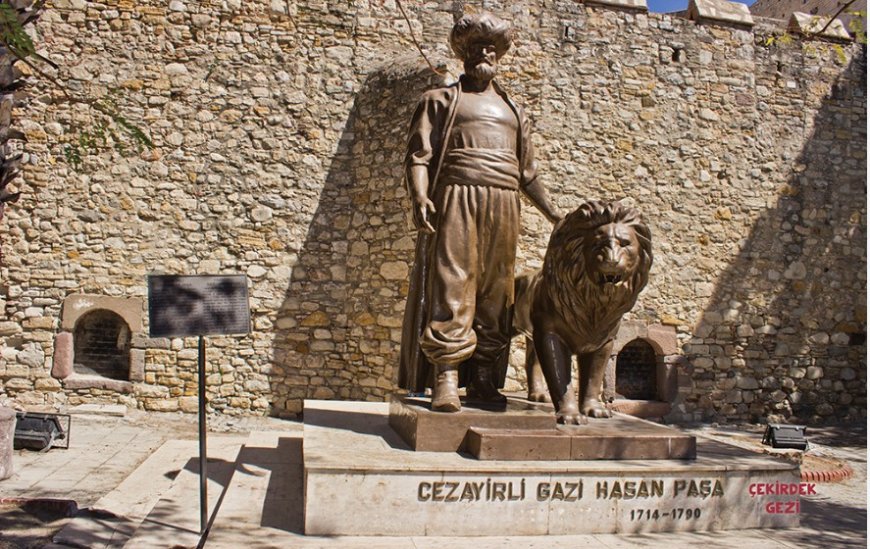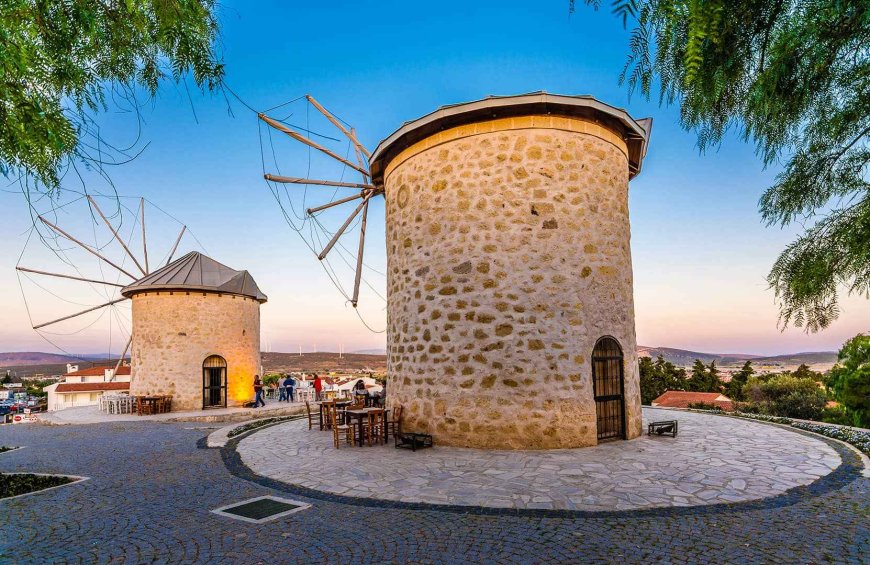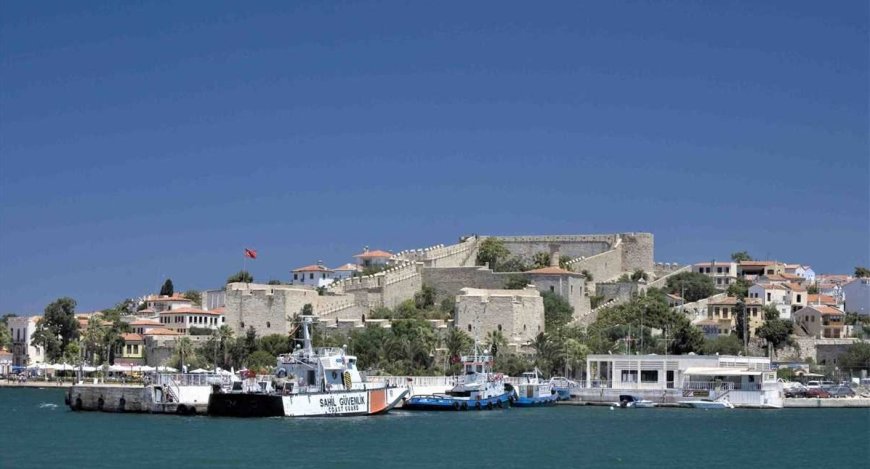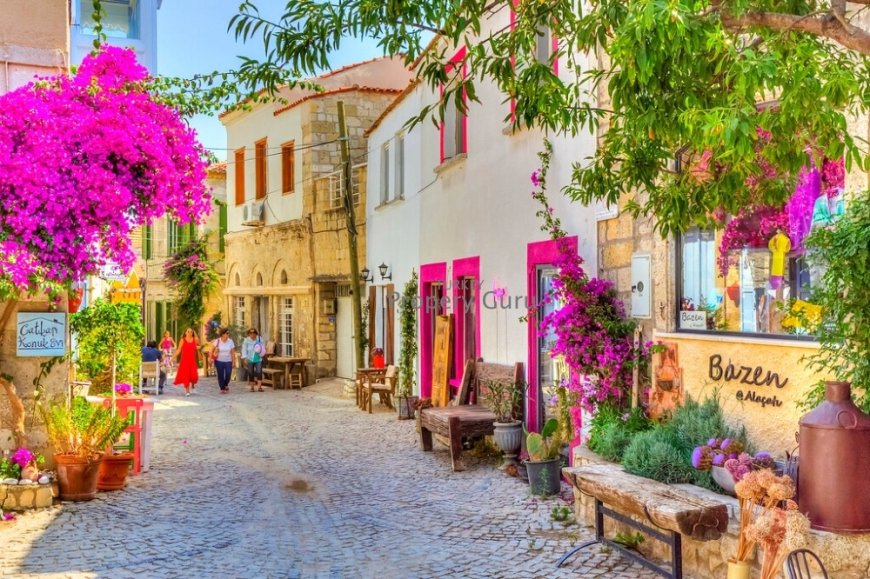Çeşme: Where wind, warm waters and history converge on the Aegean
A concise guide to Çeşme’s layered appeal: a 16th-century castle and Erythrai ruins, Alaçatı’s wind sports, Ilıca’s thermal-sea mix, marina access, shoulder-season strategy and Aegean flavors.

Çeşme: Where wind, warm waters and history converge on the Aegean
MEDICENTER TV / IZMIR
A peninsula with a long memory
On the western edge of Izmir province, the Çeşme Peninsula has guarded Aegean sea lanes for centuries. The town’s skyline is anchored by the 16th-century Çeşme Castle, commissioned during the reign of Bayezid II and today home to a small museum. Just offshore, the 1770 Battle of Çeşme—between Ottoman and Russian fleets—left an imprint on maritime history that remains part of local identity. These layers make Çeşme more than a summer escape: it is a coastal settlement where the past still frames the present.
Alaçatı’s wind economy
A 15-minute drive from the center, Alaçatı has built a global reputation on a simple constant: reliable meltem winds. Its shallow, sandy-bottomed bays and predictable breeze create an ideal classroom for wind and kite surfing. Beyond sport, the wind has seeded a local “experience economy”: board schools, rental shops, small guesthouses restored from stone cottages, and evening streets that pivot smoothly from day-time wetsuits to night-time bistros. For visitors, the result is a dual rhythm—quiet coves by day, vivid lanes by night—without losing the town’s small-scale feel.
Ilıca’s rare mix: thermal springs meeting the sea
Few Mediterranean beaches offer what Ilıca does: naturally warm mineral waters seeping into the shoreline. The temperature moderation makes the bay unusually swimmable outside peak summer, and supports wellness-oriented hotels that extend the season into spring and autumn. Families favor the broad, fine-sand shelf; swimmers appreciate the gentle gradient and glass-clear shallows. For travelers designing shoulder-season itineraries, Ilıca is the peninsula’s most convincing answer to “why come now?”
Ildırı (Erythrai): a sunset over antiquity
To the northeast, the ruins of Erythrai at Ildırı rise on terraces above a reed-lined inlet. The Hellenic city’s theater and temple fragments survive among thyme and rockrose, with late-day light earning the site its ancient epithet—“the red place.” The visit pairs naturally with a quiet seafood table in the village below, where the pace remains stubbornly local compared with the peninsula’s busier southern strand.
Getting there—and getting around
Çeşme sits roughly 90 kilometers west of Izmir. The O-32 motorway ties the peninsula to the city and, by extension, to Adnan Menderes Airport in about an hour’s drive under normal traffic. Within town, a modern marina supports yacht itineraries with 400+ berths, cafés and chandlery services, while seasonal ferries connect Çeşme to the Greek island of Chios for day trips when schedules permit. In peak months, parking near popular beaches tightens quickly; early starts and public minibuses (dolmuş) help ease the strain.
Beyond summer: capacity and care
Popularity has consequences. July–August crowds can stretch beach carrying capacity and local roads. The peninsula’s strengths—wind sports, thermal waters, open-air heritage—lend themselves to spring and fall travel, which not only improves visitor comfort but also softens the seasonal shock to local services. Many operators now court longer stays in these “shoulder” windows with instruction packages, wellness programs and heritage walks.
What to taste: an edible map of the Aegean
Menus across the peninsula are a primer in Aegean simplicity: small-boat seafood; zeytinyağlı (olive-oil) meze; fresh herbs and wild greens from nearby hills. In Alaçatı’s market, bunches of cibes, radika and şevketibostan cue the season more reliably than a calendar. Meanwhile, ongoing efforts to cultivate mastic (sakız) trees—historically native to the area—add a subtle, resin-scented thread to local desserts and liqueurs.
Bottom line: Çeşme’s appeal is not one thing; it is the meeting of several—history you can walk, a wind you can learn from, waters that stay warm when the crowds thin, and food that tells you exactly where you are. For travelers who want a coastal destination with texture beyond the beach, this Aegean corner of Izmir offers multiple ways to be “in season”—even when summer has technically ended.

*

*

*

*






















